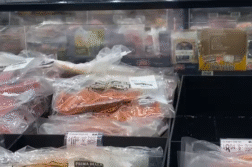SEATTLE, Wash. (Ivanhoe Newswire) — In the last few years, more than 900 private stem cell clinics have opened in the US. They claim stem cells will cure everything from arthritis to macular degeneration to autism to erectile dysfunction. The FDA says many of those claims are just not true, and none of the clinics have its approval.
Norman Wohlken’s osteoarthritis makes walking painful. He read an ad for a stem cell clinic and signed up.
“If you’re desperate, you’re in pain. But there is hope for a cure, then you’re probably going to try it,” said Wohlken.
He paid $1,400 to have cells extracted, spun in a centrifuge, and reinjected.
“The results were negligible, no improvement. In fact, worse,” said Wohlken.
Doctor Chuck Murry has worked on regenerating heart muscle with stem cells for twenty years. He says some private clinics are taking people’s money and giving them unproven treatments that could in fact be harmful.
“Let’s gather some data and let’s see. Here’s standard of care. Is it better, same, or worse? It’s not that hard, and that’s not being done. They skipped all that hard work in the middle,” said Chuck Murry, MD, PhD, Director, Institute for Stem Cell and Regenerative Medicine at UW Medicine.
The FDA is cracking down, notifying clinics like this one in Florida that stem cell procedures must be approved as clinical trials.
“I think the FDA waited too long to start and so this blew up on them. Now there’s 900 or so of these clinics around the country right now,” said Dr. Murry.
Dr. Murry says stem cells offer great hope, but cautions folks not to risk trying them before they’re thoroughly researched.
Right now, the only stem cell treatments approved by the FDA are those for the treatment of certain cancers and disorders of the blood and immune system. The FDA says people need to ask stem cell clinics if they are part of the few clinical trials that are FDA approved.
Contributors to this news report include: Wendy Chioji, Field Producer; Bruce Maniscalco, Videographer; Cyndy McGrath, Supervising Producer; Roque Correa, Editor.
To receive a free weekly e-mail on Medical Breakthroughs from Ivanhoe, sign up at: http://www.ivanhoe.com/ftk
MEDICAL BREAKTHROUGHS
RESEARCH SUMMARY
TOPIC: STEM CELL CLINICS: BUYERS BEWARE!
REPORT: MB #4588
BACKGROUND: Stem cell therapies may offer the potential to treat diseases or conditions for which few treatments exist. Sometimes called the body’s “master cells,” stem cells are the cells that develop into blood, brain, bones, and all of the body’s organs. They have the potential to repair, restore, replace, and regenerate cells, and could possibly be used to treat many medical conditions and diseases. But the U.S. Food and Drug Administration is concerned that some patients seeking cures and remedies are vulnerable to stem cell treatments that are illegal and potentially harmful. And the FDA is increasing its oversight and enforcement to protect people from disreputable stem cell clinics, while continuing to encourage innovation so that the medical industry can properly harness the potential of stem cell products.
(Source: https://www.fda.gov/consumers/consumer-updates/fda-warns-about-stem-cell-therapies)
DANGERS: All medical treatments have benefits and risks. But unproven stem cell therapies can be particularly unsafe. For instance, attendees at a 2016 FDA public workshop discussed several cases of severe adverse events. One patient became blind due to an injection of stem cells into the eye. Another patient received a spinal cord injection that caused the growth of a spinal tumor. Other potential safety concerns for unproven treatments include administration site reactions, the ability of cells to move from placement sites and change into inappropriate cell types or multiply, failure of cells to work as expected, and the growth of tumors. Even if stem cells are your own cells, there are still safety risks such as those noted above. In addition, if cells are manipulated after removal, there is a risk of contamination of the cells.
(Source: https://www.fda.gov/consumers/consumer-updates/fda-warns-about-stem-cell-therapies)
NEW TECHNOLOGY: Chuck Murry, MD, PhD, Director, Institute for Stem Cell and Regenerative Medicine at the University of Washington Medicine explained, “It’s kind of like the Wild West. It’s as though people can just go and set up a shop and say we can cure anything with these cells as though they have magical powers not defined by biology or physics and they just wait for people who are desperately ill to come in. The Food and Drug Administration is becoming increasingly concerned about it and they’re starting to act. But I think the FDA waited too long to start.” Dr. Murry hopes to see more public education along with State Medical Association state legislatures getting involved.
(Source: Chuck Murry, MD, PhD)
FOR MORE INFORMATION ON THIS REPORT, PLEASE CONTACT:
Bobbi Nodell
206-543-7129
If this story or any other Ivanhoe story has impacted your life or prompted you or someone you know to seek or change treatments, please let us know by contacting Marjorie Bekaert Thomas at mthomas@ivanhoe.com




